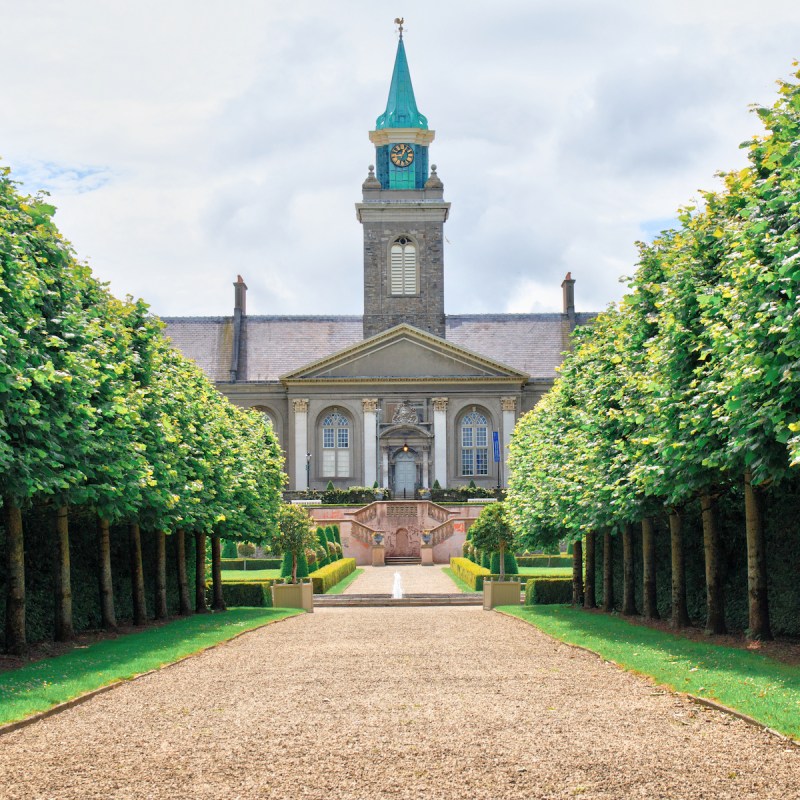
Like most major cities in the world, Dublin can be an expensive place to visit. But also like most other cities, it doesn’t have to be this way. Dublin has plenty of things you can see and do for free, or nearly free. One of the reasons I love Dublin is the atmosphere, which is free, and there are lots of ways you can experience the charm of this city without spending much money.
Videos by TravelAwaits
There’s always a lot going on in Dublin, like street performers and pop-up market stalls, which are free, but you can also visit museums and art galleries without splashing cash. Here’s my pick of the best free, or nearly free, things to do in Dublin, Ireland.

1. National Museum Of Ireland
Just like in Scotland, most museums and art galleries in Ireland are free to enter. Of all of these museums, The National Museum of Ireland is one of the most popular, and because it’s free, it does get quite busy. Don’t miss the mummified remains of human sacrifices, which were preserved in the Irish bogs and are still incredible specimens of mummified bodies. A lot of visitors will be heading for this display, so be patient and be prepared to wait in line to see this. The museum also has some beautiful examples of prehistoric gold and Viking weapons, as well as pottery and other archaeological finds from the area.
2. Dublin Mountains
As you might expect, hiking the Dublin Mountains — which act as a glorious backdrop to the city — is completely free. You will have to pay for travel to the mountains either by bus, taxi, or car, as they aren’t really close enough to walk to. But once you’re there, you’ve got an amazing way to spend half a day for free. If the word “mountains” puts you off, don’t worry, these are more like big hills and you don’t need to be an experienced hiker to walk them. There are plenty of trails, some easier than others, and lots of families take advantage of this natural wonder which gifts you incredible views once you get up there. It’s the perfect place to take a picnic.

3. Dublin’s Doors
If you like architecture, or you just have a passing interest in old buildings, Dublin has some incredible examples of houses the Georgians built. Among the Georgian architecture and intricate fittings are some beautiful front doors, the likes of which you’ll be hard-pressed to find anywhere else. These houses were once the homes of well-to-do politicians and professionals, and it’s the grand colorful doors that still speak of that time in Dublin’s history. Dating back to the 18th century, these doors and brass knockers make fantastic photos to show everyone back home.
4. Live Music In The Pub
In Dublin, you don’t have to pay ticket prices to see some seriously good musicians playing a gig — all you have to do is go down to the pub. Lots of the city center pubs have live bands playing for free, and there’s always an impromptu Irish trad session going on in back rooms and around the fire. All you need to spend is the money for a pint or two. If you want live music for free, without the cost of a beer, you can find plenty of street musicians on Grafton Street who you can stop and watch. They’re so good, though, you’ll be sure to tip them. Dublin is a city of music. Take in the street performers on the way to the pub and you have the best of both worlds.

5. Irish Museum Of Modern Art
The building that houses the Irish Museum of Modern Art is as much of an attraction as the displays themselves. It’s an incredible 17th-century building, formerly the Hospital of Kilmainham, that sits within 48 acres of land. These grounds are beautifully landscaped and maintained and they are a lovely place for a wander. Entry to the galleries is free, though some exhibitions may have a charge attached. Guided tours are held every day and are free to join, or you can take your own time around the corridors and rooms full of sculptures, artworks, and installations.
6. Dollymount Strand
Showcasing Dublin’s coastline, Dollymount Strand is a 3-mile stretch of sand and dunes with incredible views out to sea. The beach is part of North Bul Island, a nature reserve that floats just off the coast, where you can spot migratory birds and maybe even a seal or two. What you are likely to see is brave Dubliners going for a swim, no matter what time of year it is. This is a popular spot for sea swimmers and even when the water is very cold, which it often is, bathers will be wading out for a dip. If you’re not tempted to try it yourself, this is a lovely spot for a jog or just a gentle walk by the water.

7. The Dead Zoo
One of Dublin’s more unusual museums, The Dead Zoo houses a collection of taxidermied animals and well-preserved skeletons. This is Dublin’s oldest museum and has over 10,000 species on display, and it’s completely free to enter. It’s not for anyone who’s squeamish about this sort of thing, but if you don’t mind the sight of a few stuffed animals, it’s a fascinating look at natural history and very unusual to see so many taxidermied creatures in one place. The museum also has the flies that Darwin studied on his voyage to the Galapagos Islands in its collection, but these are usually kept in the private collection.
8. The Grounds Of Dublin Castle
You do have to pay a fee to take a tour of the interior of Dublin Castle, but you can explore the grounds for free. The site was settled by Vikings in 841 and the castle was established here sometime in the 13th century, so there’s a lot of history to soak up. Enjoy the exterior of the castle walls and take a moment to reflect on its history when you sit in the peaceful Dubh Lin Garden. The cobbled squares and the atmosphere of the grounds make this a fascinating way to see the castle for free.

9. Dublin’s Waterways
Most visitors to Dublin are familiar with the River Liffey, which flows right through the middle of the city. The Ha’Penny Bridge is a lovely place for a photo as it was built in 1816 with arches over the water in complete majesty. It looks especially beautiful in the evening when it’s lit up. But not so many visitors are familiar with the canals of Dublin. The Royal Canal is in the north of the city and the Grand Canal is in the south. Both are equally worth a visit. The canals were built in the 18th century as trade routes, but are now very quiet compared to their heyday of business, becoming redundant when the railway was built. Both canals are lovely places for a walk or to spend some time on a bench watching the water flow by.
Pro Tip: Dublin On Foot
You can spend time in Dublin without spending anything at all, simply walking around, soaking up the atmosphere, watching street performers, and seeing the architecture, sculptures, and statues of Dublin’s most famous sons and daughters. Look up as you walk around and you’ll see stone and bronze busts of famous figures from history. It’s a culturally rich city, so there’s a lot of character on display as you walk around. For more on how to walk the city, check out 7 Fabulous Things Not To Miss While Exploring Dublin By Foot.
